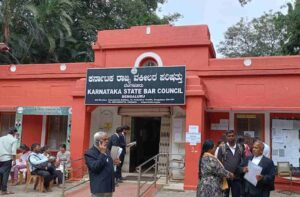A Financial Emergency under Article 360 of the Indian Constitution is declared when India’s financial stability is threatened. During this period, the President can reduce government salaries, direct financial policies, and centralize financial control. No such emergency has been declared in India to date.
Important One Liners on Financial Emergency (Article 360):
- Article 360 empowers the President to declare a Financial Emergency when India’s financial stability is threatened.
- During a Financial Emergency, the Union can direct states to observe financial propriety measures.
- Salaries of government officials, including Supreme Court and High Court judges, can be reduced under a Financial Emergency.
- All money bills passed by state legislatures may require Presidential approval during a Financial Emergency.
- A Financial Emergency proclamation must be approved by Parliament within two months to remain valid.
- Once approved, a Financial Emergency continues indefinitely until revoked by the President.
- No Financial Emergency has been declared in India since the Constitution’s inception.
- The 38th Amendment Act of 1975 made the President’s satisfaction in declaring a Financial Emergency final and non-justiciable.
- The 44th Amendment Act of 1978 restored judicial review over the proclamation of a Financial Emergency.
- Article 360 is part of Part XVIII of the Constitution, which deals with emergency provisions.
The Indian Constitution, known for its robust democratic framework and detailed provisions for various emergencies, incorporates the concept of a “Financial Emergency.”
While declarations of National Emergency (Article 352) and State Emergency (President’s Rule under Article 356) have historically seen use, the concept of a Financial Emergency, provided for under Article 360, remains relatively untested and subject to academic debate.
In this article, we will examine the constitutional provision of Financial Emergencies, discussing its legal basis, historical evolution, potential impact on governance, and broader implications for India’s economic and political landscape.
Financial Emergency is a measure designed to safeguard the country’s economic stability by empowering the central government to take necessary fiscal actions when the nation faces a severe financial crisis.
What are Constitutional Emergencies in India
India’s constitutional design includes various emergency provisions that provide a legal mechanism for the state to respond to extraordinary situations.
These emergencies are broadly categorized into:
- National Emergency (Article 352): Typically invoked in times of war, external aggression, or armed rebellion, granting the central government extraordinary powers.
- State Emergency (Article 356): Also known as President’s Rule, applied when a state government cannot function according to constitutional provisions.
- Financial Emergency (Article 360): The least used and most debated emergency, which allows the central government to address severe financial instability in the country.
Why Emergencies Exist
The framers of the Indian Constitution envisaged that in times of crisis, whether military, political, or financial, the state might require extraordinary powers to protect the nation’s integrity, stability, and economic health.
Each emergency provision has its unique scope, conditions, and limitations to ensure that the exercise of power does not infringe unduly on the democratic fabric of the nation.
What Is a Financial Emergency?
A Financial Emergency refers to a situation where the financial stability or credit of India is threatened.
The provision is contained in Article 360 of the Indian Constitution, which empowers the President to declare such an emergency when the financial stability of the country is at risk.
Constitutional Text and Its Interpretation
Article 360 states that if the President is satisfied that the financial stability or credit of India is threatened, he may proclaim a Financial Emergency.
During such an emergency, the central government gains extraordinary authority to direct the states in financial matters and to manage the financial resources of the nation.
The proclamation may also lead to a reduction in salaries and allowances of government officials, among other measures.
This provision, although not invoked so far in Indian history, has been a subject of intense scholarly discussion regarding its potential scope and the safeguards built into it.
The Article clearly differentiates it from the more frequently discussed National and State Emergencies, focusing primarily on fiscal measures rather than security or administrative control.
Historical Background
When the Indian Constitution was adopted in 1950, the newly independent nation faced monumental challenges in establishing financial stability.
The economic landscape was characterized by a predominantly agrarian society, limited industrial infrastructure, and widespread poverty.
Economic policy decisions were thus critical, and the framers of the Constitution understood that future crises could jeopardize the nation’s fiscal health.
Lessons from Global Financial Crises
Globally, the mid-20th century saw significant economic upheavals and financial crises.
The Great Depression of the 1930s, followed by post-war economic adjustments, demonstrated the necessity for governments to have contingency measures to manage economic downturns.
In this context, the inclusion of Article 360 was forward-looking, acknowledging that economic instability could pose a threat as grave as military or internal security issues.
Rationale for Including Financial Emergencies in the Constitution
- Safeguarding Economic Stability: The provision was intended to offer the government a legal framework to intervene swiftly and decisively during financial crises, thereby maintaining the nation’s credit and economic health.
- Ensuring Financial Discipline: By providing a mechanism to curtail excessive expenditure and manage public finances, the Article aimed to instill fiscal discipline across the federal structure.
- Centralized Control in Crisis: In times of severe financial instability, having a central authority to coordinate fiscal policies and financial management could help prevent state-level fiscal mismanagement that might exacerbate the crisis.
The inclusion of a Financial Emergency clause is a testament to the foresight of India’s constitutional framers.
It acknowledges that economic crises can be as disruptive to national stability as political or security emergencies.
Features and Scope of Article 360
Grounds for Proclamation of Financial Emergency
According to Article 360 of the Indian Constitution, the President can declare a Financial Emergency if he/she is satisfied that:
- The financial stability or credit of India or any part of its territory is threatened.
- There is an economic crisis that may affect the sovereignty, integrity, and security of the country.
- The government is unable to manage its financial obligations, such as repayment of debts or budget deficits.
Period of Financial Emergency
-
Once proclaimed, a Financial Emergency remains in force indefinitely unless it is revoked.
-
The proclamation must be approved by both Houses of Parliament within two months from the date of its issuance.
-
There is no maximum time limit for a financial emergency, unlike a National Emergency (Article 352), which needs renewal every six months.
-
The President can revoke the Financial Emergency anytime by issuing another proclamation.
Broad Powers Conferred
Under Article 360, once a Financial Emergency is declared, the President can exercise wide-ranging powers, including but not limited to:
- Control Over Financial Resources: The central government may direct the states on matters of finance, including distribution and allocation of resources.
- Reduction in Salaries and Allowances: The provision permits the reduction of salaries and allowances of all or any class of persons serving in the executive, legislature, or judiciary of India or any state.
- Management of Public Debt: It enables the central government to restructure public debt and manage fiscal imbalances to restore financial stability.
Limits and Conditions
Despite the extensive powers it grants, Article 360 is circumscribed by certain limitations:
- Presidential Discretion: The declaration rests solely on the President’s satisfaction that the country’s financial stability is under threat. This subjective element has been a point of debate, raising questions about checks and balances.
- Duration and Revocability: Unlike other emergencies, the proclamation of a Financial Emergency remains in force until it is revoked by the President. The absence of a fixed time frame necessitates ongoing vigilance and political oversight.
- Impact on Federal Structure: The directive power over states raises concerns regarding the balance of power between the center and the states. Constitutional scholars have long debated whether the Article could potentially undermine federalism.
Practical Implications
While India has never declared a Financial Emergency, the mere existence of the provision has significant implications for fiscal governance and accountability.
It acts as a deterrent against fiscal irresponsibility at both the central and state levels and provides a legal safety valve in the event of a national financial crisis.
Constitutional Safeguards and Checks on Declaring a Financial Emergency
#1 Role of the Legislature
One of the key safeguards in the constitutional design is the role of the legislature. Although the President can proclaim a Financial Emergency, the implementation of measures under this Article is subject to legislative scrutiny.
The legislature, both at the center and in the state,s plays a crucial role in ensuring that the emergency powers are not abused.
Parliamentary debates, committee reviews, and subsequent legislation serve as checks on the executive’s unilateral decisions.
#2 Judicial Oversight
The judiciary, especially the Supreme Court of India, has the power to review any actions taken under the guise of a Financial Emergency.
While the Article provides the President with broad discretion, it does not place the proclamation beyond judicial review.
Legal challenges can be brought before the courts to examine whether the conditions for a Financial Emergency were genuinely met and whether the measures imposed were proportional and justified.
#3 Federal Balance and Accountability
India’s federal structure ensures that while the central government can intervene in state finances during a crisis, the states are not rendered powerless.
Constitutional debates have focused on preserving the delicate balance between centralized authority and state autonomy.
The provision’s design reflects a commitment to federalism, even during times of crisis, by ensuring that state governments have avenues for contesting central directives and by emphasizing accountability in fiscal management.
#4 Transparency and Public Debate
A further safeguard is the emphasis on transparency. Any declaration of a Financial Emergency would likely be subject to intense public and media scrutiny, fostering an environment where the government’s actions are continuously monitored.
This public oversight is a critical component of democratic accountability, ensuring that emergency powers are exercised in the public interest and not for political expediency.
Political and Economic Implications of Declaring a Financial Emergency
#1 Short-term Measures vs. Long-term Consequences
Declaring a Financial Emergency would enable the government to implement immediate fiscal reforms to stabilize the economy. However, these measures might have long-term political and economic repercussions.
Short-term actions could include austerity measures, cuts in public expenditure, and reallocation of financial resources.
While these may restore stability, they could also lead to public discontent, reduced consumer spending, and long-term structural changes in the economy.
#2 Impact on Fiscal Federalism
A key area of concern is the potential impact on India’s federal structure. Financial Emergency powers allow the central government to override state financial decisions, which could strain relations between the center and the states.
While such intervention might be necessary during extreme crises, it also raises questions about the long-term autonomy of states in managing their finances.
#3 Political Ramifications
Politically, the declaration of a Financial Emergency could lead to heightened tensions between the ruling party at the center and opposition parties, as well as between the central and state governments.
Critics argue that in politically charged environments, emergency powers can be misused to suppress dissent and consolidate power.
Therefore, the political debate surrounding Financial Emergency is as much about constitutional propriety as it is about safeguarding democratic norms.
#4 Economic Policy and Investor Confidence
Investor confidence and economic stability are closely intertwined. The declaration of a Financial Emergency might send shockwaves through financial markets, affecting foreign investment and domestic economic activities.
While the intent is to stabilize the economy, the announcement itself could create uncertainty among investors, thereby affecting capital inflows, credit ratings, and overall economic sentiment.
#5 Social Implications
Austerity measures and fiscal reforms imposed during a Financial Emergency could have significant social implications.
Cuts in government expenditure might affect social welfare programs, public services, and subsidies that support vulnerable populations.
Balancing fiscal responsibility with social equity is a critical challenge that policymakers would face during such a crisis.
Judicial Review and the Role of the Supreme Court
#1 The Power of Judicial Review
In the context of a Financial Emergency, the Supreme Court’s role as the guardian of the Constitution becomes even more critical.
Judicial review ensures that the executive’s actions remain within constitutional bounds.
The Court’s oversight provides an important check on any potential misuse of emergency powers, safeguarding against arbitrary decisions that could erode democratic values.
#2 Past Precedents in Constitutional Emergencies
Although a Financial Emergency has never been declared in India, the Supreme Court has dealt with other forms of emergency powers in landmark cases related to National and State Emergencies.
These cases offer important insights into how the judiciary might approach disputes arising from the invocation of Article 360.
Judicial precedents stress the importance of proportionality, necessity, and adherence to constitutional principles when extraordinary powers are exercised.
#4 Balancing National Interest with Individual Rights
A central concern during any emergency is the balance between the nation’s collective interests and the rights of individuals.
The judiciary’s intervention serves as a bulwark against the potential infringement of individual rights.
In the event of a Financial Emergency, judicial review would examine whether the measures taken are in the genuine interest of national financial stability and whether they unduly compromise individual or state rights.
Future Legal Challenges
Given the complexity of fiscal governance and the potential for political misuse, any declaration of a Financial Emergency would almost certainly trigger legal challenges.
These cases would likely focus on the scope of the President’s discretionary power, the proportionality of the measures taken, and the impact on federal autonomy.
The evolving jurisprudence on emergency powers in India suggests that the Supreme Court will continue to play a pivotal role in interpreting and constraining the use of Article 360.
Financial Emergency vs. National and State Emergencies
| Aspect | National Emergency | State Emergency (President’s Rule) | Financial Emergency |
|---|---|---|---|
| Grounds for Proclamation | Threat to the security of India or any part thereof by war, external aggression, or armed rebellion. | Failure of the constitutional machinery in a state. | Threat to the financial stability or credit of India or any part thereof. |
| Constitutional Article | Article 352 | Article 356 | Article 360 |
| Authority to Proclaim | President, based on the written recommendation of the Union Cabinet. | President, based on a report from the state’s Governor or otherwise. | President, if satisfied that the financial stability or credit of India is threatened. |
| Parliamentary Approval | Must be approved by both Houses of Parliament within one month by a special majority. | Must be approved by both Houses of Parliament within two months by a simple majority. | Must be approved by both Houses of Parliament within two months by a simple majority. |
| Duration | Initially six months; can be extended indefinitely with parliamentary approval every six months. | Initially six months; can be extended up to a maximum of three years with parliamentary approval every six months. Beyond one year, certain conditions must be met for further extension. | Remains in force until revoked by the President; no maximum duration specified. |
| Effect on Centre-State Relations | Central government assumes the power to legislate on subjects in the State List; state governments are required to comply with directives from the Centre. | State legislature is either dissolved or suspended; Parliament assumes the power to legislate for the state; executive powers of the state are exercised by the President through the Governor. | Central government can issue directions to states regarding financial matters; all money bills passed by state legislatures may require the President’s approval. |
| Impact on Fundamental Rights | Fundamental Rights under Article 19 are automatically suspended; other Fundamental Rights may be suspended by a separate Presidential order. | No direct impact on Fundamental Rights. | No direct impact on Fundamental Rights. |
| Effect on Government Officials’ Salaries | No specific provision for altering salaries. | No specific provision for altering salaries. | President can direct the reduction of salaries and allowances of all or any class of persons serving in the Union and the states, including judges of the Supreme Court and High Courts. |
| Judicial Review | Subject to judicial review; courts can examine the validity of the proclamation. | Subject to judicial review; courts can examine the validity of the proclamation. | Subject to judicial review; courts can examine the validity of the proclamation. |
| Historical Instances | Declared three times: 1962 (Indo-China war), 1971 (Indo-Pakistan war), and 1975-77 (internal disturbances). | Imposed numerous times in various states; notable instances include Punjab (1951), Kerala (1959), and multiple times during the 1970s and 1980s. | No Financial Emergency has been declared in India to date. |
Constitutional Distinctions
While National and State Emergencies have been invoked in India’s past, a Financial Emergency is fundamentally different in its focus and scope:
- National Emergency (Article 352): Primarily deals with threats to the security and sovereignty of the nation. It allows the central government to assume control over state functions during periods of external aggression or internal insurrection.
- State Emergency (Article 356): Used when a state government fails to function according to constitutional provisions, leading to the imposition of President’s Rule.
- Financial Emergency (Article 360): This specifically targets issues related to the nation’s financial stability and credit. It is designed to address fiscal crises rather than political or security issues.
Historical Use and Lessons Learned
India’s historical experience with National and State Emergencies has been mixed. While these measures have sometimes been necessary to restore order, they have also led to significant political and social upheaval.
The fact that a Financial Emergency has never been declared suggests a strong institutional preference for managing fiscal crises through other, less drastic means.
Nevertheless, the mere existence of Article 360 provides a legal mechanism that could be activated in the worst-case scenario.
International Comparisons
In many democratic countries, provisions exist that allow governments to take extraordinary fiscal measures during economic crises.
However, these measures are typically implemented through legislative processes rather than unilateral executive declarations.
India’s approach, as enshrined in Article 360, is relatively unique in its explicit constitutional sanctioning of emergency fiscal powers.
Comparing India’s provision with similar mechanisms in other countries highlights both the strengths and potential pitfalls of such a system.
Balancing Act: Centralized Authority vs. Democratic Accountability
The core challenge in any emergency is striking a balance between centralized authority and democratic accountability. National and State Emergencies often come under intense scrutiny for their impact on civil liberties and state autonomy.
Similarly, a Financial Emergency could concentrate fiscal power in the hands of the central government, potentially upsetting the balance of federalism.
Impact on Indian Economy and Financial Governance
Immediate Economic Measures
Should a Financial Emergency be declared, the government would have the authority to implement immediate measures aimed at restoring fiscal stability.
These could include:
- Austerity Measures: Reduction in government expenditure, including cutbacks in salaries and allowances, aimed at reducing fiscal deficits.
- Reallocation of Resources: Centralized control over the allocation of funds to prioritize essential services and infrastructure projects that are crucial for economic stability.
- Debt Restructuring: Initiatives to manage and restructure both public and external debt, ensuring that financial obligations do not spiral out of control.
Long-term Economic Reforms
While immediate measures would be critical to stabilize the economy, the long-term impact of a Financial Emergency would depend on the reforms initiated during the crisis.
Long-term reforms might include:
- Tax Reforms: Streamlining tax policies to increase revenue and reduce fiscal deficits.
- Public Sector Reforms: Reorganizing public sector enterprises and state finances to improve efficiency and accountability.
- Financial Regulation: Strengthening financial regulatory frameworks to prevent future crises and ensure transparency in fiscal management.
Verdict
The provision for Financial Emergency under the Indian Constitution, enshrined in Article 360, remains one of the most intriguing yet untested mechanisms in the constitutional framework.
Designed to safeguard the nation’s fiscal health during times of severe economic instability, this provision embodies a delicate balance between centralized executive authority and democratic accountability.
Financial Emergency provision is both a necessary safety valve and a subject of considerable caution.
Its successful application would require not only decisive executive action but also robust checks by the legislature and judiciary, complemented by modern data-driven policy measures.
Follow The Legal QnA For More Updates…















